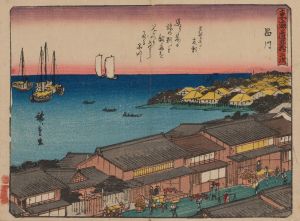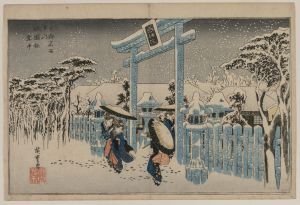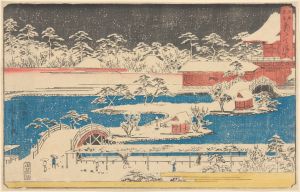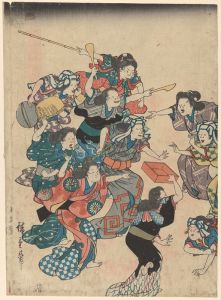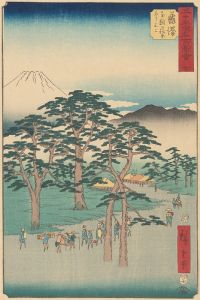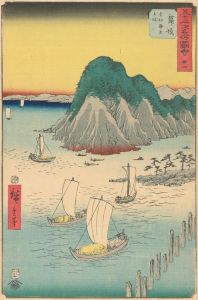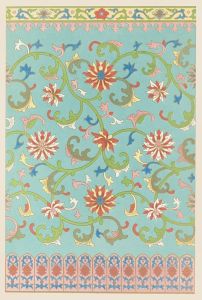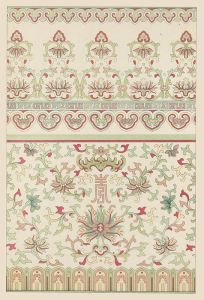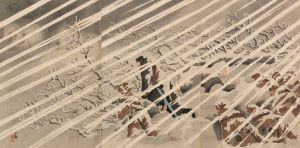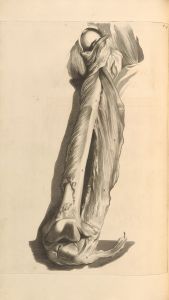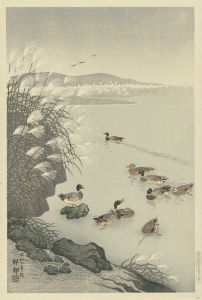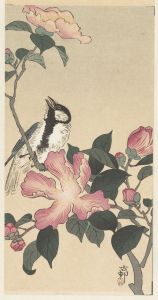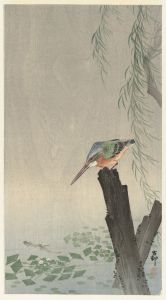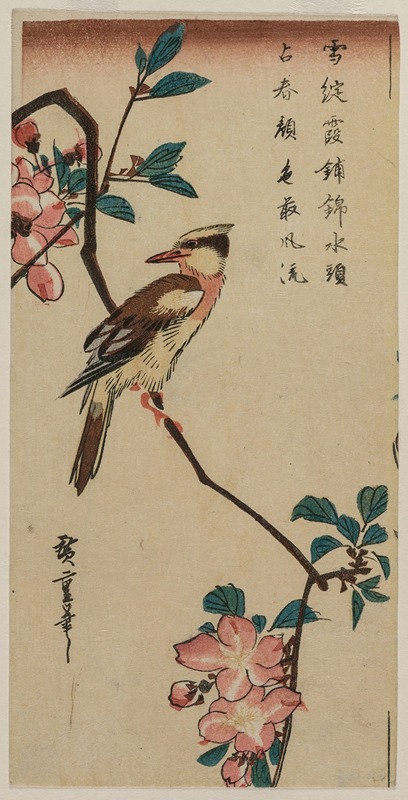
Black-Naped Oriole on a Hall Crabapple
A hand-painted replica of Andō Hiroshige’s masterpiece Black-Naped Oriole on a Hall Crabapple, meticulously crafted by professional artists to capture the true essence of the original. Each piece is created with museum-quality canvas and rare mineral pigments, carefully painted by experienced artists with delicate brushstrokes and rich, layered colors to perfectly recreate the texture of the original artwork. Unlike machine-printed reproductions, this hand-painted version brings the painting to life, infused with the artist’s emotions and skill in every stroke. Whether for personal collection or home decoration, it instantly elevates the artistic atmosphere of any space.
Andō Hiroshige, a prominent Japanese ukiyo-e artist of the Edo period, is renowned for his landscape prints and depictions of birds and flowers. One of his works, "Black-Naped Oriole on a Hall Crabapple," exemplifies his skill in capturing the delicate beauty of nature. Hiroshige's art is characterized by its vibrant colors, intricate details, and the ability to convey the transient beauty of the natural world.
The "Black-Naped Oriole on a Hall Crabapple" is part of Hiroshige's kachō-e (bird-and-flower) genre, which was a popular subject in Japanese art. This genre focuses on the harmonious relationship between birds and flowers, often symbolizing the seasons and the passage of time. Hiroshige's work in this genre is celebrated for its elegance and the way it captures the essence of the subjects.
In this particular piece, Hiroshige depicts a black-naped oriole, a bird known for its striking yellow plumage and distinctive black markings on its head. The oriole is perched on a branch of a hall crabapple tree, which is adorned with delicate blossoms. The composition is carefully balanced, with the bird and flowers occupying the foreground, while the background is often left minimal to emphasize the subjects.
Hiroshige's use of color in this work is noteworthy. The bright yellow of the oriole contrasts beautifully with the soft pink and white hues of the crabapple blossoms. This contrast not only highlights the bird's vibrant plumage but also draws attention to the intricate details of the flowers. Hiroshige's mastery of color and composition is evident in the way he captures the interplay of light and shadow, adding depth and dimension to the scene.
The technique used in creating this print is woodblock printing, a traditional Japanese method that involves carving an image into a wooden block, applying ink, and then pressing it onto paper. Hiroshige was a master of this technique, and his prints are known for their precision and clarity. The "Black-Naped Oriole on a Hall Crabapple" is a testament to his skill, showcasing the fine lines and subtle gradations of color that are hallmarks of his work.
Hiroshige's bird-and-flower prints were not only appreciated for their aesthetic beauty but also for their cultural significance. In Japanese culture, birds and flowers are often imbued with symbolic meanings. The oriole, for example, is sometimes associated with happiness and good fortune, while the crabapple blossoms can symbolize the fleeting nature of life. Through his art, Hiroshige invites viewers to reflect on these themes and appreciate the beauty of the natural world.
"Black-Naped Oriole on a Hall Crabapple" is a fine example of Hiroshige's ability to blend artistic skill with cultural symbolism. His work continues to be celebrated for its beauty and its contribution to the ukiyo-e tradition. Today, Hiroshige's prints are highly valued by collectors and art enthusiasts around the world, and they remain an important part of Japan's artistic heritage.





